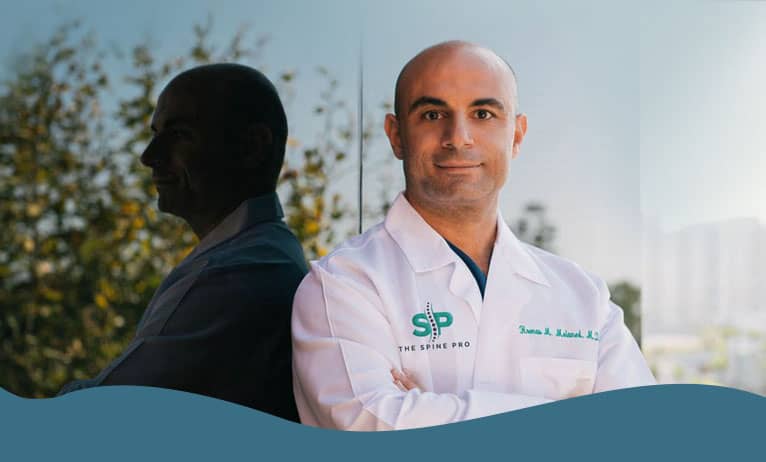Neck Pain from Cervical Stenosis: What You Need to Know

Cervical stenosis is a condition that affects a significant number of adults, often presenting discomfort, pain, and other neurological symptoms. But what is cervical stenosis, and how can it be addressed? In this article, we delve deep into the causes, symptoms, and the most advanced treatments available.
What is Cervical Stenosis?
Cervical stenosis is a degenerative condition in which the spinal canal in the neck region (cervical spine) narrows. This narrowing can compress the spinal cord and nerve roots, leading to symptoms that can range from mild discomfort to severe neurological impairment.
Causes of Cervical Stenosis
There are various factors and conditions that can lead to cervical stenosis:
- Age-related Changes: As we age, the spine undergoes changes that can cause the spinal canal to narrow.
- Herniated Discs: The cervical discs can bulge or rupture with age or injury, pressing on the spinal cord or nerve roots.
- Bone Spurs: The body might respond to the wear and tear of the spine by growing extra bone in an attempt to support the spine. These bony growths can intrude into the spinal canal.
- Injuries: Accidents and traumas can lead to dislocations or fractures of the cervical spine, which can cause swelling of nearby tissues and damage the spinal cord.
- Tumors: Rarely, cervical stenosis can be caused by tumors that grow within the spinal cord or between the spinal cord and the vertebrae.
Symptoms of Cervical Stenosis
Some individuals might have cervical stenosis and not even know it, as they might not experience symptoms. However, for those who do, symptoms might include:
- Neck pain
- Numbness or tingling in the hand, arm, foot, or leg
- Weakness in the hand, arm, foot, or leg
- Walking and balance problems
- Headache
- Gait and coordination problems
- Clawing of the hand
- Burning in fingers
- Radiating pain into each or both arms
- Pain radiating into the shoulder blade
Treating Cervical Stenosis with Dr. Melamed’s Expertise
Under the guidance of an expert like Dr. Melamed at The Spine Pro, patients have access to state-of-the-art therapeutic options tailored to their unique needs.
Conservative, Nonsurgical Interventions
Understanding the importance of non-invasive methods, Dr. Melamed champions an array of conservative treatments that naturally decompress the nerve, thereby relieving the persistent and insidious pain often associated with cervical stenosis.
- Opioid-free Treatment Programs: Going against the grain of over-prescription, Dr. Melamed crafts opioid-free treatment plans to ensure patients experience relief without the risks of addiction and side effects.
- Physical Therapy: This may emphasize posture correction, facilitating spinal alignment. For a holistic approach, Dr. Melamed also encourages yoga and acupuncture sessions, known for their benefits in alleviating spinal discomfort.
- Acupuncture: This is another modality along with cupping that can help with pain and discomfort in a holistic approach
- Chiropractic Treatment: An experienced chiropractor, through soft tissue work, decompression and traction, can help with the pain.
- Transcutaneous Electric Nerve Stimulator (TENS): Dr. Melamed often recommends the use of a TENS unit for those dealing with chronic pain, sending mild electric currents through the skin to alleviate discomfort.
- Epidural Steroids: For those with acute pain episodes, Dr. Melamed might opt for epidural steroid injections, aiming to reduce inflammation and bring immediate relief.
- Ergonomics: Make sure that good ergonomics are utilized at all times to help minimize pain and help recover from any injury
- Nutrition: Use of an Anti-inflammatory diet to optimize the body and lower inflammation to allow the body to heal itself.
When Surgery is Recommended
For some patients, nonsurgical treatments might not offer the expected relief. When pain continues to hamper daily life, Dr. Melamed adopts a thorough diagnostic approach. Before jumping into surgery, he ensures every detail is analyzed with various medical imaging techniques, including X-rays, CT scans, MRI, and other advanced imaging and tests if needed to get an accurate representation of the cervical spine’s condition.
Surgical Options: With the aim to remove the pressing material on the spinal cord and nerve roots, Dr. Melamed is well-versed in an array of surgical interventions, including:
- Decompressive laminectomy
- Microlaminectomy
- Microforaminotomy
- Medial facetectomy
- Microfacetectomy
- Microdiscectomy
- Artificial disc replacement
- Motion preservation
- Laminoplasty
- Spinal fusion when necessary
Dr. Melamed ensures patients are well-informed and comfortable with the chosen procedure.
Time to Take Charge of Your Neck Pain
Cervical stenosis, although common, should not be taken lightly. Early diagnosis and intervention can drastically improve the quality of life and reduce further complications. If you or someone you know is experiencing any of the symptoms mentioned above, it’s crucial to seek expert guidance. Remember, your spinal health is a foundational element of your overall well-being. Don’t wait to address issues; take charge of your health today.
Any neurologic issues such as weakness and/or numbness or difficulties with gait, balance and coordination require immediate spine surgery evaluation.
Click here to request an in-person or telemedicine/televideo virtual appointment or call 424-21-SPINE.






